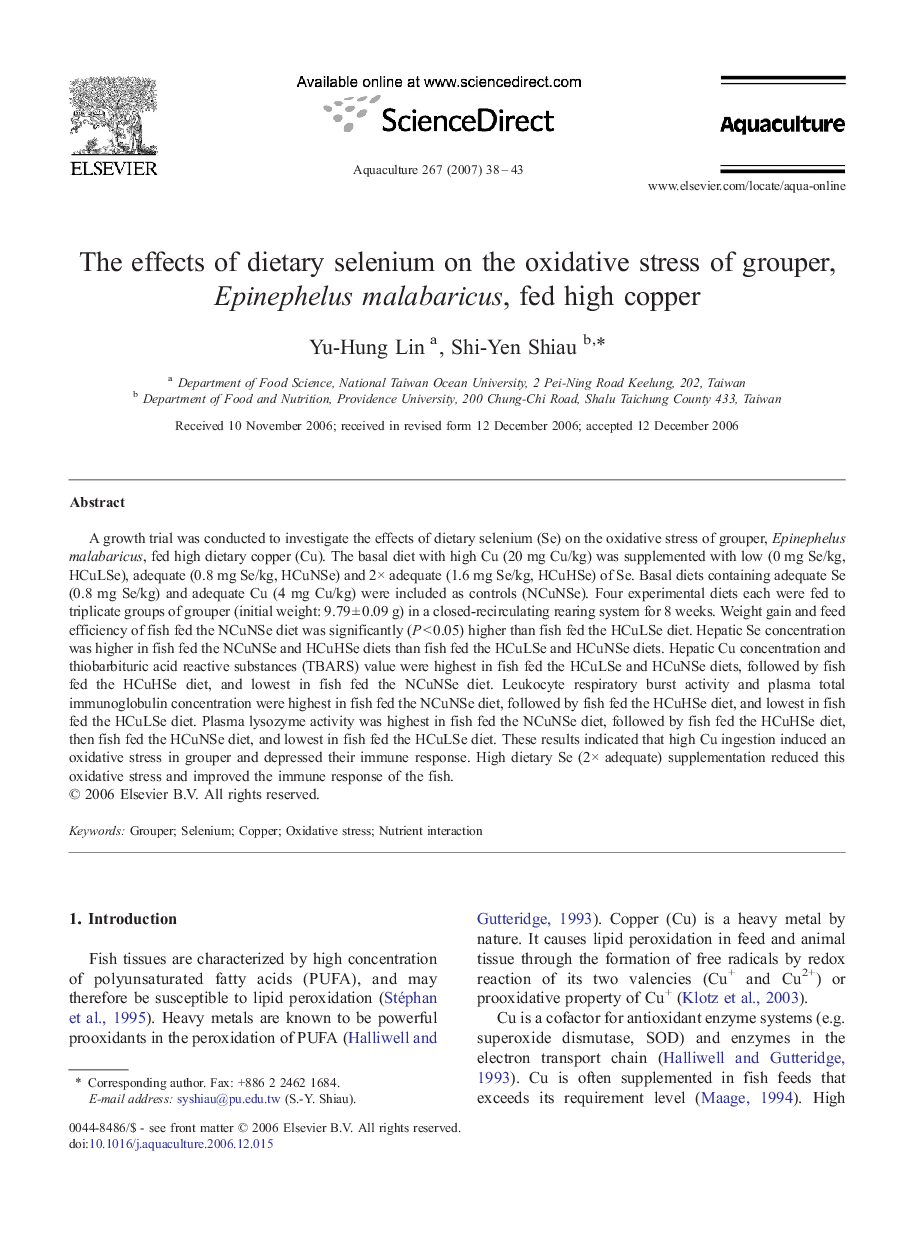| Article ID | Journal | Published Year | Pages | File Type |
|---|---|---|---|---|
| 2425460 | Aquaculture | 2007 | 6 Pages |
A growth trial was conducted to investigate the effects of dietary selenium (Se) on the oxidative stress of grouper, Epinephelus malabaricus, fed high dietary copper (Cu). The basal diet with high Cu (20 mg Cu/kg) was supplemented with low (0 mg Se/kg, HCuLSe), adequate (0.8 mg Se/kg, HCuNSe) and 2× adequate (1.6 mg Se/kg, HCuHSe) of Se. Basal diets containing adequate Se (0.8 mg Se/kg) and adequate Cu (4 mg Cu/kg) were included as controls (NCuNSe). Four experimental diets each were fed to triplicate groups of grouper (initial weight: 9.79 ± 0.09 g) in a closed-recirculating rearing system for 8 weeks. Weight gain and feed efficiency of fish fed the NCuNSe diet was significantly (P < 0.05) higher than fish fed the HCuLSe diet. Hepatic Se concentration was higher in fish fed the NCuNSe and HCuHSe diets than fish fed the HCuLSe and HCuNSe diets. Hepatic Cu concentration and thiobarbituric acid reactive substances (TBARS) value were highest in fish fed the HCuLSe and HCuNSe diets, followed by fish fed the HCuHSe diet, and lowest in fish fed the NCuNSe diet. Leukocyte respiratory burst activity and plasma total immunoglobulin concentration were highest in fish fed the NCuNSe diet, followed by fish fed the HCuHSe diet, and lowest in fish fed the HCuLSe diet. Plasma lysozyme activity was highest in fish fed the NCuNSe diet, followed by fish fed the HCuHSe diet, then fish fed the HCuNSe diet, and lowest in fish fed the HCuLSe diet. These results indicated that high Cu ingestion induced an oxidative stress in grouper and depressed their immune response. High dietary Se (2× adequate) supplementation reduced this oxidative stress and improved the immune response of the fish.
